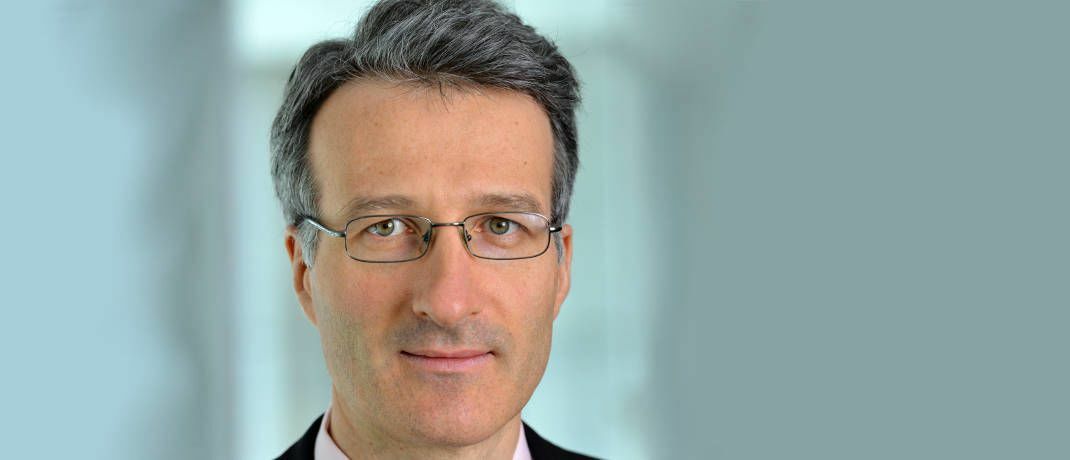By Hamlin Lovell, NordicInvestor
USD 15 trillion of debt globally now has negative yields, and headlines have been made by the fact that a handful of European high yield bonds have negative yields. In fact, only 2% of bonds in the European high yield index (the BofA Merrill Lynch Euro Non-Financial Fixed & Floating rate HY constrained Index) have a yield to worst (YTW) of below 0%, and none of them are owned by the ODDO BHF Euro High Yield Bond UCITS fund. The index contains 258 issuers. Alexis Renault, Head of High Yield at Franco-Germany manager, ODDO BHF Asset Management, selects bonds from 142 of them. His portfolio has an average credit spread of around 400 basis points, relative to the Bund (German Government Bond) curve, which is almost entirely negative out to 30 years. If zero is used as benchmark for measuring the spread, it is around 330 basis points over the German Bund, which has a yield of minus 80 at the two-year maturity. Given that European high yield default rates have averaged 3.7% between 1970 and 2016, according to Moodys, the current yield might seem insufficient.
However, global defaults are forecast at 2.6% this year by Moodys, which predicts a lower default rate in Europe- and ODDO BHF AM has an unblemished record of avoiding defaults during the current Millennium. Renault expects, “we will see some increase in general default rates, but not an explosion of the type seen in 2009. Our investment process strives to avoid defaults, and we have not owned any bonds that defaulted since 2000”. Historically, ODDO BHF AM has often sold bonds a year or two or more before they defaulted.
Nonetheless, he does see some risk of spread widening. “Since corporate fundamentals are deteriorating, with some poor company results, and no end in sight for the US/China Trade War, we see potential for the spread to widen. We could still generate a positive return with 100 basis points of spread widening.* Our breakeven level of spread widening is 140 basis points on a one-year horizon. On the other hand, central bank intervention should contain spread widening. The ECB is due to start a new round of QE in September of October. The most positive scenario is that QE could actually reduce credit spreads. Our base case is a low positive return from our European high yield strategy, with income from yield being partly offset by spread widening”, explains Renault. “This spread is the key source of returns”, he stresses.
Defensive positioning
Given these risks of rising defaults and widening spreads, Renault – whose team carry out their own fundamental cash flow modelling for corporates – remains defensively positioned. He is strongly under-weight of cyclicals, such as chemicals, autos, and basic resources, and overweight of more cash-generative firms such as telecoms and cables. He is also under-weight of UK credit, partly due to Brexit uncertainty and increased risk of a hard Brexit. Southern European periphery exposure is not a risk that generally worries him now, as he views Italy as the main peripheral risk. Some 15-20% of the portfolio is in Euro-denominated bonds issued by US companies. The average yield on these defensive names is lower than on the cyclicals that Renault is avoiding, but he fears that the cyclicals are vulnerable to further spread widening – and possibly defaults.
Renault is also vigilant about liquidity risk. He has not invested in bonds issued entities associated with Lars Windhorst** that have been the subject of some controversy. “Liquidity has declined in all financial markets, not only European high yield. Our key focus is to stay liquid”, he says.
The lowest credit ratings in the portfolio are a couple of ‘B’ and ‘CCC+’ bonds issued by defensive companies, which Renault expects to get upgraded as they are deleveraging. These bonds are yielding between 400 and 800 basis points now. In general, Renault finds credit ratings agencies can be slow to react to either improving or deteriorating corporate performance.
This defensive positioning has been consistent throughout 2019 and he has been at least 90% invested throughout the year. Cash has fluctuated between 1% and 9%, depending partly on the new issue calendar. “We will selectively participate in new issues, some of which have been upgraded since they came to market. A slowdown in issuance means that the European high yield market has slightly shrunk this year, but we expect it will soon expand as fallen angels join high yield indices. We expect that some BBB or BBB- rated companies will be downgraded to high yield”. ODDO BHF AM’s high yield team sit in the same room as the investment grade team and have a constant exchange of ideas, so the high yield team will be able to take advantage of any attractive entry points on fallen angels.
Since 2000, ODDO BHF AM’s high yield strategy has steadily outperformed the European high yield index, annualizing at 7% versus 5.13% for the index; it has also been much less volatile than the index. “Around 75% of the outperformance has come from picking companies, with a little bit from country selection and dynamic management”*, says Renault, who reiterates that European high yield is a relatively attractive asset class: “over the long term it has generated the same return as European equities with half the volatility. Over the past eight years, it has matched European equity returns with three times less volatility. And under a bad scenario, such as late 2018, high yield should lose less than equities. In the fourth quarter of 2018, it lost 3% versus 15% for equities”. European high yield has also shown a near zero correlation to sovereign debt, and a moderate correlation to equities, between 1999 and 2016.
**Those companies are no investment recommendations



